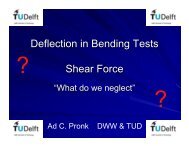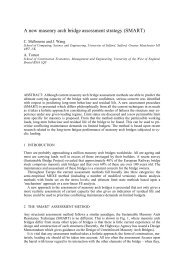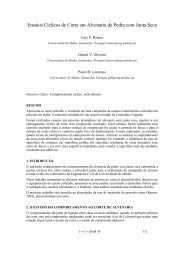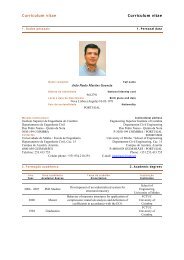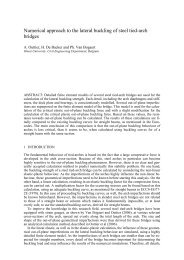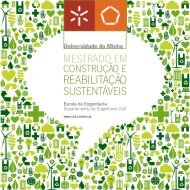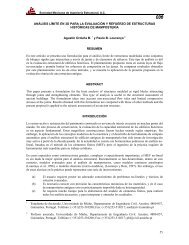Sustainable Construction A Life Cycle Approach in Engineering
Sustainable Construction A Life Cycle Approach in Engineering
Sustainable Construction A Life Cycle Approach in Engineering
Create successful ePaper yourself
Turn your PDF publications into a flip-book with our unique Google optimized e-Paper software.
tion products need to be viewed <strong>in</strong> terms of functional units, how they perform throughout the<br />
life-time of a built facility and what happens to them when deconstruction or demolition takes<br />
place. Focus<strong>in</strong>g on <strong>in</strong>tegrated and holistic research is necessary as the associated problems are<br />
<strong>in</strong>terrelated and wide. Further, a s<strong>in</strong>gle build<strong>in</strong>g may consist of tens of basic materials and thousands<br />
of separate products. The challenge is how to measure and manage the impact of construction<br />
products. Generic performance-based design and product development technologies<br />
offer tools for management of research and development work.<br />
Reuse and recycl<strong>in</strong>g of materials and components achieve a rate of over 80% <strong>in</strong> some<br />
OECD countries, but it should be noted that much of the material is used <strong>in</strong> a low value-added<br />
form. Increas<strong>in</strong>g the use of recycled waste as build<strong>in</strong>g materials is one of the steps to positively<br />
address the environmental impacts.<br />
Environmental management of a construction project for a new build<strong>in</strong>g or for a renovation<br />
project <strong>in</strong>corporates an <strong>in</strong>tegrated and performance-based approach for management of the<br />
overall functional properties of a facility. There is a need to develop methods to <strong>in</strong>tegrate environmental<br />
and fiscal analyses that take <strong>in</strong>to account the different phases of the life-cycle.<br />
Energy-efficiency <strong>in</strong> build<strong>in</strong>gs is the most environmentally benign way to improve ecoefficiency<br />
of construction. From the viewpo<strong>in</strong>t of EU policy, it is one of the three key issues<br />
identified as an area of necessary action. The <strong>in</strong>fluence of the EU Energy Performance of<br />
Build<strong>in</strong>gs Directive (EPBD) is expected to grow more and more. Technical systems and envelopes<br />
of the exist<strong>in</strong>g build<strong>in</strong>g stock are especially critical. From a product-related po<strong>in</strong>t of view<br />
the actions <strong>in</strong>clude design<strong>in</strong>g and sell<strong>in</strong>g more energy-efficient products that use fewer or new<br />
or different materials with an equivalent or superior performance. Improvement of energy efficiency<br />
also br<strong>in</strong>gs several benefits for urban susta<strong>in</strong>ability.<br />
1.5 Relationship with other COST Actions<br />
The impetus for this COST Action resulted from the work with<strong>in</strong> COST C12 “Improvement of<br />
Build<strong>in</strong>gs’ Structural Quality by New Technologies”, where the need to create a specific Action<br />
on susta<strong>in</strong>ability of constructions emerged. The Action C25 has also some complementary objectives<br />
to the COST Action C16 “Improv<strong>in</strong>g the Quality of Exist<strong>in</strong>g Urban Build<strong>in</strong>g Envelopes”.<br />
The relevant results achieved <strong>in</strong> C16 are taken <strong>in</strong>to consideration as a base of knowledge<br />
and, to some extent, have been further developed with<strong>in</strong> C25.<br />
Additionally, there are also a few complementary objectives with the COST Actions C23<br />
“Strategies for a Low Carbon Urban Built Environment” and C24 “COSTeXergy”. The ma<strong>in</strong><br />
objectives of these two Actions are focused on the direct or <strong>in</strong>direct energy impacts of <strong>in</strong>frastructure<br />
developments on energy issues.<br />
This Susta<strong>in</strong>ability of <strong>Construction</strong>s Action does not focus its research work on energy issues.<br />
However, the <strong>in</strong>tegrated approach to life-time structural eng<strong>in</strong>eer<strong>in</strong>g needs to take <strong>in</strong>to account<br />
energy-related issues such as build<strong>in</strong>g energy performance and build<strong>in</strong>g energy sav<strong>in</strong>g as<br />
well as the thermal comfort <strong>in</strong> build<strong>in</strong>gs. In order to avoid overlapp<strong>in</strong>g activities and to coord<strong>in</strong>ate<br />
the cooperation of complementary activities with C23 and C24 Actions, close contacts<br />
with COST Actions C23 and C24 have been established, particularly regard<strong>in</strong>g the coord<strong>in</strong>ation<br />
of complementary activities, avoid<strong>in</strong>g overlaps and foster<strong>in</strong>g synergies.<br />
Susta<strong>in</strong>ability of <strong>Construction</strong>s has a broad scope, that can be divided <strong>in</strong>to two ma<strong>in</strong> dimensions:<br />
Structural <strong>Life</strong>-time (where the ma<strong>in</strong> focus is on the construction itself, tak<strong>in</strong>g <strong>in</strong>to account,<br />
<strong>in</strong> an <strong>in</strong>tegrated way, the environmental, economic and social life-cycle impacts of the<br />
structure), and Energy Efficiency of the <strong>Construction</strong> (where the energy consumption due to<br />
occupancy by people is the ma<strong>in</strong> focus), as illustrated <strong>in</strong> Figure 2.<br />
This Action is focused on an <strong>in</strong>tegrated approach to deal with the end-products of construction,<br />
clearly targeted at development of methods and practices of life-time eng<strong>in</strong>eer<strong>in</strong>g from a<br />
structural eng<strong>in</strong>eer<strong>in</strong>g po<strong>in</strong>t of view. It aims to provide the construction sector with a new<br />
framework and ideas based on the <strong>in</strong>tegration of approaches and results from a diversity of ongo<strong>in</strong>g<br />
research and development projects. It also aims at improved <strong>in</strong>teraction between different<br />
discipl<strong>in</strong>es such as the development of assessment methods and energy-efficiency of technical<br />
service systems.<br />
4


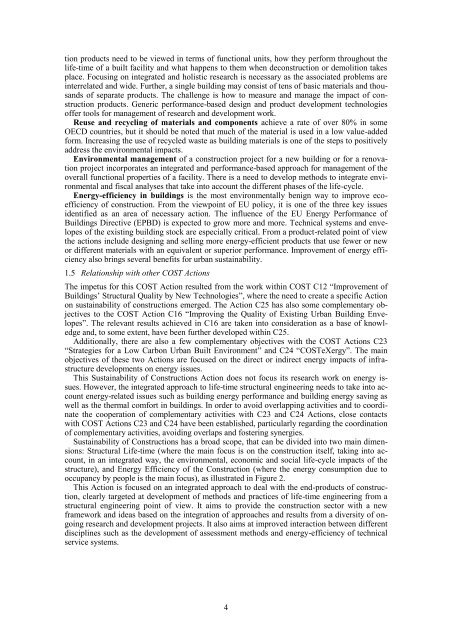
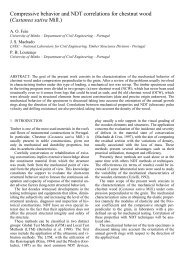
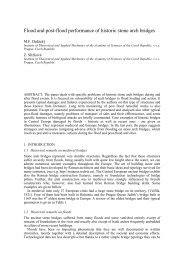
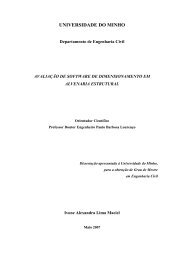
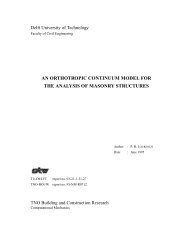

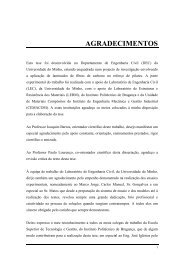

![Weibull [Compatibility Mode]](https://img.yumpu.com/48296360/1/190x134/weibull-compatibility-mode.jpg?quality=85)
